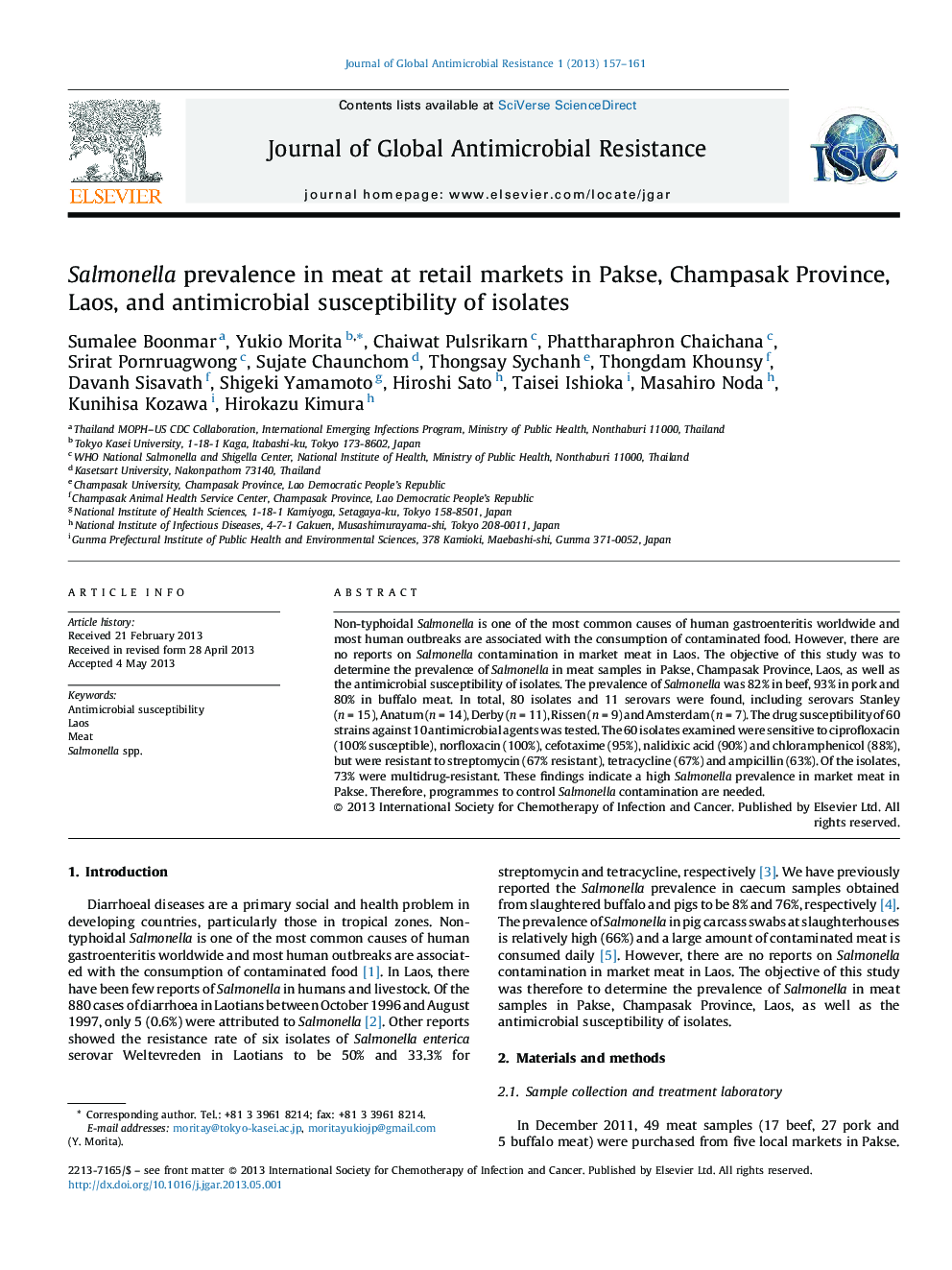| Article ID | Journal | Published Year | Pages | File Type |
|---|---|---|---|---|
| 10169980 | Journal of Global Antimicrobial Resistance | 2013 | 5 Pages |
Abstract
Non-typhoidal Salmonella is one of the most common causes of human gastroenteritis worldwide and most human outbreaks are associated with the consumption of contaminated food. However, there are no reports on Salmonella contamination in market meat in Laos. The objective of this study was to determine the prevalence of Salmonella in meat samples in Pakse, Champasak Province, Laos, as well as the antimicrobial susceptibility of isolates. The prevalence of Salmonella was 82% in beef, 93% in pork and 80% in buffalo meat. In total, 80 isolates and 11 serovars were found, including serovars Stanley (n = 15), Anatum (n = 14), Derby (n = 11), Rissen (n = 9) and Amsterdam (n = 7). The drug susceptibility of 60 strains against 10 antimicrobial agents was tested. The 60 isolates examined were sensitive to ciprofloxacin (100% susceptible), norfloxacin (100%), cefotaxime (95%), nalidixic acid (90%) and chloramphenicol (88%), but were resistant to streptomycin (67% resistant), tetracycline (67%) and ampicillin (63%). Of the isolates, 73% were multidrug-resistant. These findings indicate a high Salmonella prevalence in market meat in Pakse. Therefore, programmes to control Salmonella contamination are needed.
Related Topics
Life Sciences
Immunology and Microbiology
Applied Microbiology and Biotechnology
Authors
Sumalee Boonmar, Yukio Morita, Chaiwat Pulsrikarn, Phattharaphron Chaichana, Srirat Pornruagwong, Sujate Chaunchom, Thongsay Sychanh, Thongdam Khounsy, Davanh Sisavath, Shigeki Yamamoto, Hiroshi Sato, Taisei Ishioka, Masahiro Noda, Kunihisa Kozawa,
